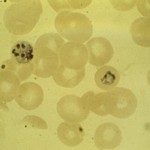Lien vers Pubmed [PMID] – 1429837
J Cell Biol 1992 Nov; 119(4): 811-21
The spatial and temporal expression of the dystrophin gene has been examined during mouse embryogenesis, using in situ hybridization on tissue sections with a probe from the 5′ end of the dystrophin coding sequence. In striated muscle, dystrophin transcripts are detectable from about 9 d in the heart and slightly later in skeletal muscle. However, there is an important difference between the two types of muscle: the heart is already functional as a contractile organ before the appearance of dystrophin transcripts, whereas this is not the case in skeletal muscle, where dystrophin and myosin heavy chain transcripts are first detectable at the same time. In the heart, dystrophin transcripts accumulate initially in the outflow tract and, at later stages, in both the atria and ventricles. In skeletal muscle, the gene is expressed in all myocytes irrespective of fiber type. In smooth muscle dystrophin transcripts are first detectable from 11 d post coitum in blood vessels, and subsequently in lung bronchi and in the digestive tract. The other major tissue where the dystrophin gene is expressed is the brain, where transcripts are clearly detectable in the cerebellum from 13 d. High-level expression of the gene is also seen in particular regions of the forebrain involved in the regulation of circadian rhythms, the endocrine system, and olfactory function, not previously identified in this context. The findings are discussed in the context of the pathology of Duchenne muscular dystrophy.

